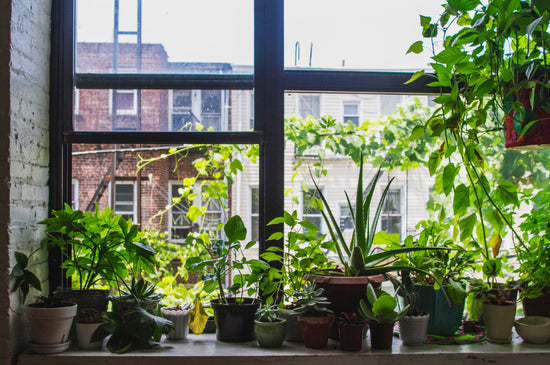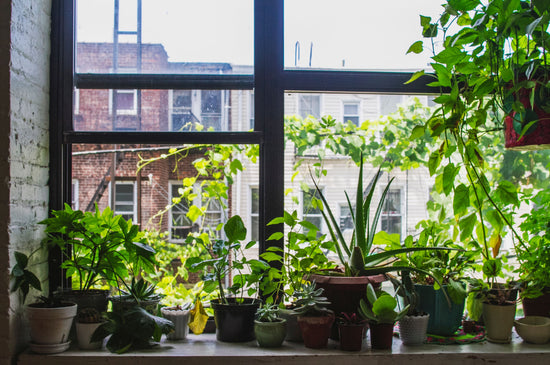Clematis Care Made Simple: Tips for Thriving Vines
Clematis vines are celebrated for their stunning flowers and their ability to transform any garden into a lush paradise. Whether you’re a beginner or an experienced gardener, clematis care can be straightforward with the right approach. These flowering vines require a combination of sunlight, proper watering, and occasional pruning to thrive. Start your clematis journey with the Clematis Variety Pack to enjoy a selection of vibrant blooms.
Choosing the Right Clematis Variety
The first step to successful clematis care is selecting a variety that suits your garden's needs and conditions. Popular options include:
- Clematis Jackmanii: Known for its large, deep purple blooms, perfect for beginners.
- Clematis The President: A compact choice ideal for small gardens or containers.
- Clematis Montana Rubens: A vigorous grower with fragrant pink flowers.
- Clematis Armandii: An evergreen clematis that offers year-round foliage and fragrant white blooms.
Each clematis variety has unique characteristics, so be sure to match your choice to your garden's sunlight, soil, and space requirements.
Planting Clematis for Success
Proper planting is essential for clematis vines to thrive. Follow these steps:
- Location: Choose a spot with well-drained soil and at least six hours of sunlight daily. Clematis prefers "heads in the sun, roots in the shade," so consider planting low-growing plants around the base for root protection.
- Hole Preparation: Dig a hole twice as wide and deep as the plant’s root ball. Mix in compost for added nutrients.
- Positioning: Plant clematis slightly deeper than it was in its nursery pot to protect the crown from cold damage.
- Support System: Provide a trellis, fence, or obelisk for climbing. Clematis vines are natural climbers and will thrive with proper support.
Watering and Fertilizing Clematis
Clematis requires consistent moisture but dislikes waterlogged roots.
- Watering: Keep the soil evenly moist, especially during the growing season. Water deeply once or twice a week, depending on weather conditions.
- Fertilizing: Apply a balanced, slow-release fertilizer in early spring. Avoid over-fertilizing, as this can lead to excessive foliage growth at the expense of flowers.
Pruning Clematis: Understanding the Groups
Pruning clematis vines is essential for maintaining their shape and encouraging blooms. Clematis plants are divided into three pruning groups:
- Group 1 (Early Bloomers): Flower on old wood. Prune lightly after flowering to remove dead or damaged stems.
- Group 2 (Rebloomers): Flower on both old and new wood. Prune lightly in late winter and again after the first flush of blooms.
- Group 3 (Late Bloomers): Flower on new wood. Prune back to about 12 inches in late winter or early spring.
Proper pruning ensures healthy growth and abundant flowering year after year.
Dealing with Common Clematis Problems
Even with proper care, clematis vines can face challenges:
- Clematis Wilt: A fungal disease causing sudden wilting. Remove affected stems and improve air circulation.
- Pests: Watch for aphids and slugs. Use natural repellents or introduce beneficial insects like ladybugs.
- Poor Blooming: Ensure the plant gets enough sunlight and isn’t over-fertilized.
Seasonal Care Tips
- Spring: Begin watering and apply fertilizer to support new growth. Prune as needed based on the clematis group.
- Summer: Mulch around the base to retain soil moisture and protect roots from heat.
- Autumn: Deadhead spent blooms to encourage further flowering. Prepare the plant for winter by applying mulch around the base.
- Winter: For deciduous varieties, ensure proper pruning and add mulch to protect the roots.
Enhance Your Garden with Clematis
Clematis vines are versatile and can be used in a variety of garden settings:
- Pair them with climbing roses for a stunning vertical display.
- Allow them to cascade over a pergola for shade and beauty.
- Train them along fences or walls to create a vibrant backdrop.
Explore more options, including rare varieties like Clematis Diamantina and Clematis Montana Rubens to elevate your garden.
FAQ: Clematis Care
1. How do I choose the right clematis variety for my garden?
Consider your garden’s light, soil, and space. Popular options include Clematis Jackmanii for beginners and Clematis Armandii for evergreen coverage.
2. When is the best time to plant clematis?
Plant clematis in spring or fall when the weather is cooler, allowing roots to establish before extreme heat or frost.
3. How often should I water clematis?
Water deeply once or twice a week, ensuring the soil stays moist but not waterlogged.
4. Can clematis grow in containers?
Yes, compact varieties like Clematis The President thrive in large containers with proper support and consistent watering.
5. What’s the best fertilizer for clematis?
Use a balanced fertilizer with equal parts nitrogen, phosphorus, and potassium, applied in early spring and mid-summer.
Clematis vines are an elegant addition to any garden, offering beauty and versatility with the right care. Start your clematis collection today by visiting Wekiva Foliage and transform your outdoor space.





